Green Sea Turtle: The Gentle Giant of the Ocean
The Green Sea Turtle, scientifically known as Chelonia mydas, is a majestic marine creature native to warm, tropical waters worldwide. Recognized for their large size and unique diet, these turtles are an essential part of marine ecosystems but face various threats that have led to their endangered status.
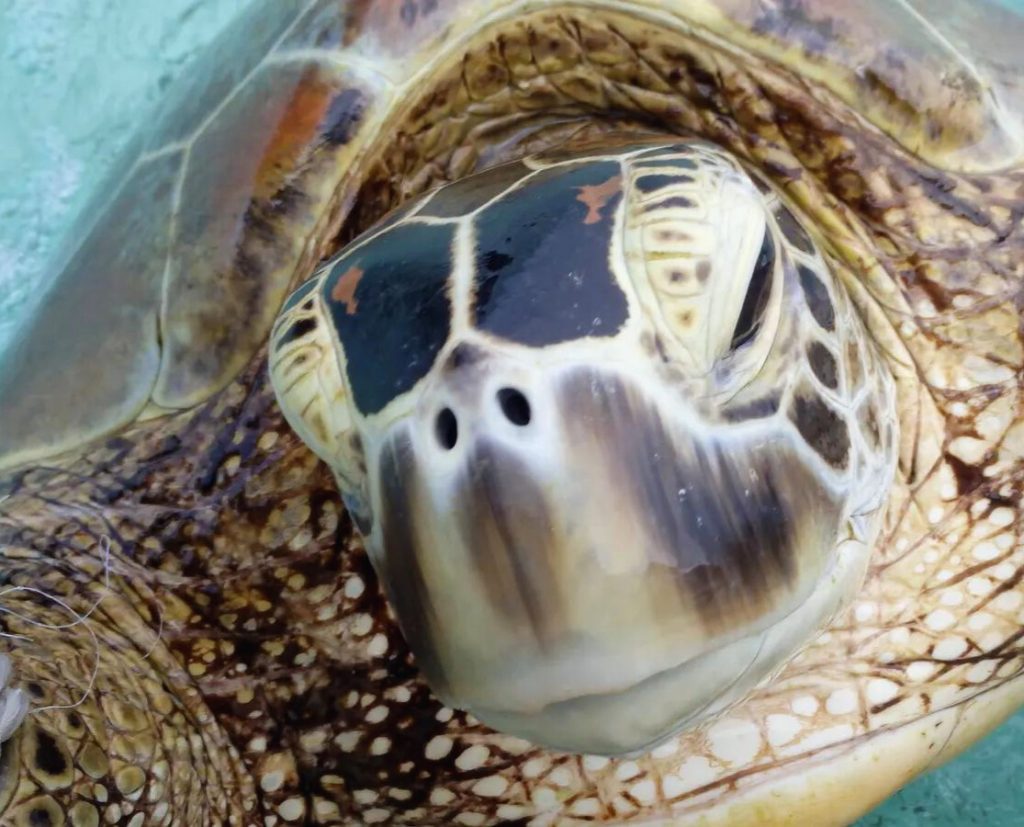
Characteristics & Appearance
Size and Weight
Green Sea Turtles are among the largest sea turtles, with newborns starting at less than eight inches long. Adult shells can measure three to five feet in length, and they can weigh between 240 to 700 pounds. The largest recorded Green Sea Turtle was 5 feet long and weighed 871 pounds.
Physical Features
These turtles are named for the green color of their cartilage and fat, not their shell, which ranges from brown to olive. Unique to this species, they have only one pair of prefrontal scales on their heads, making them easily distinguishable from other sea turtles. Their bodies are flat and oval-shaped, with each flipper featuring at least one visible claw.
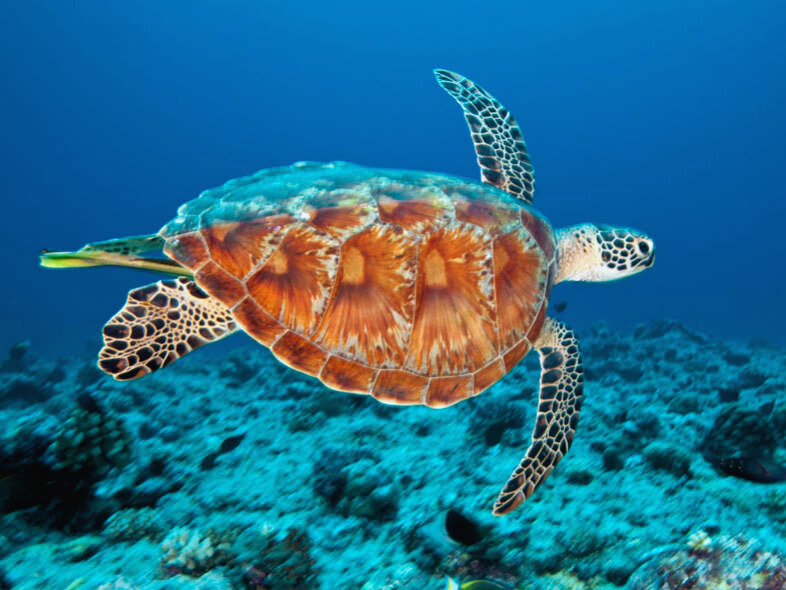
Lifespan & Reproduction
Green Sea Turtles have a long lifespan, estimated to be 70 to 80 years. They reach sexual maturity around 25 to 30 years old, with females not beginning nesting until nearly 40 years old. Males can mate annually, but females return to their nesting beaches every two to five years, often the same beaches their mothers used. They lay about 100 eggs per nest, with hatchlings making their way to the water two months later.
Habitat & Migration
These turtles are found in the Atlantic, Indian, and Pacific Oceans, preferring shallow waters near islands and beaches. They have complex migration patterns, often traversing oceans to return to their natal beaches for nesting. Key habitats include the Hawaiian Islands, Florida’s east coast, the Virgin Islands, Puerto Rico, the Mesoamerican Reef, Coastal East Africa, the Galápagos, and the Coral Triangle.
Diet
Adult Green Sea Turtles are primarily herbivorous, feeding on algae and seagrasses, earning them the nickname “ocean’s lawnmowers.” Juveniles start as omnivores, consuming worms, crustaceans, and aquatic insects. Their serrated jaws are perfectly adapted for tearing into dense vegetation.
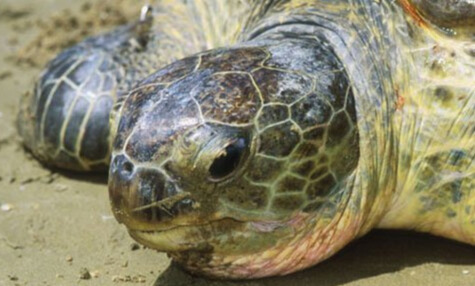
Threats & Conservation
Human Impact
The biggest threat to Green Sea Turtles is bycatch in fishing nets, leading to hundreds of thousands of fatalities annually. Overharvesting, illegal trade, and habitat loss due to coastal development also significantly impact their populations.
Climate Change
Climate change affects their environment through rising sea levels, altered water temperatures, and shifting ocean currents. These changes can disorient turtles, introduce new predators, and affect breeding beaches, skewing sex ratios towards more female hatchlings.
Predators
Predators, especially for hatchlings, include birds, crabs, and mammals. Mature turtles face fewer natural threats but can be vulnerable near sharks and other large marine predators.
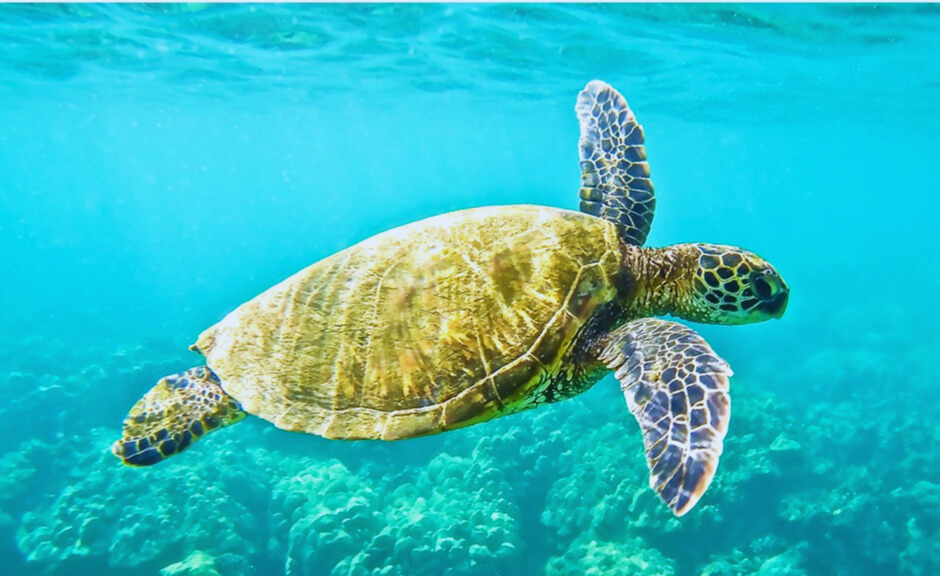
Conservation Status
The Green Sea Turtle is classified as endangered on the IUCN Red List. Conservation efforts include habitat protection, pollution control, and addressing climate change impacts. Laws like the Endangered Species Act in the U.S. and international agreements play a crucial role in their protection.
Fun Facts
- Green Sea Turtles use the Earth’s magnetic field as a compass for navigation.
- They cannot retract into their shells like land turtles.
- Temperature in nests influences the sex of hatchlings, with warmer temperatures resulting in more females.
- They communicate through low-frequency sounds, almost inaudible to humans.
Role in the Ecosystem
Green Sea Turtles play a crucial role in maintaining the health of seagrass beds and coral reefs. By feeding on seagrass, they prevent these grasses from becoming too tall and obstructive, which helps maintain the health and growth of the seagrass beds. This, in turn, benefits the numerous species that rely on these habitats for survival.
Migration and Navigation
One of the most remarkable aspects of Green Sea Turtles is their migration journey. They are known to travel thousands of miles between feeding grounds and nesting sites. Scientists believe they navigate these long distances using the Earth’s magnetic field, a phenomenon that continues to intrigue researchers.
Nesting Behavior
The nesting process of Green Sea Turtles is a fascinating and delicate period in their lifecycle. Females often return to the exact beach where they were born to lay their eggs, a behavior known as natal homing. The nesting process, which involves digging a hole in the sand, laying eggs, and covering them, is exhausting for the female turtle but crucial for the species’ survival.
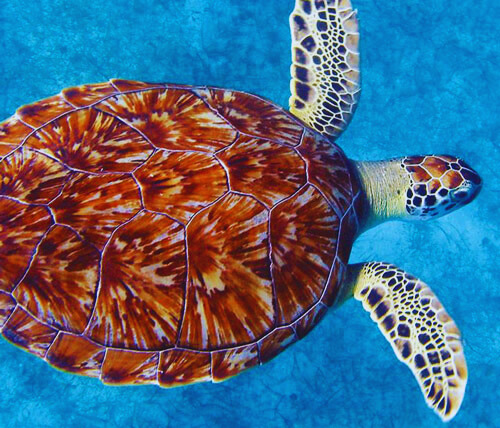
Challenges for Hatchlings
The journey of hatchlings from nest to sea is perilous. They must evade numerous predators and navigate towards the ocean, often confused by artificial lighting on beaches. Conservation efforts include initiatives to make beaches safer for hatchlings, such as reducing light pollution and protecting nesting sites.
Human Interaction and Awareness
Increased public awareness and education about the plight of Green Sea Turtles have led to better protection and conservation measures. Responsible tourism, reduced plastic use, and supporting turtle conservation programs can significantly impact the survival of this species.
Future of Green Sea Turtles
The future of Green Sea Turtles hinges on continued conservation efforts and addressing global challenges like climate change and ocean pollution. Protecting their habitats, reducing bycatch in fishing practices, and international cooperation are key to ensuring their survival.
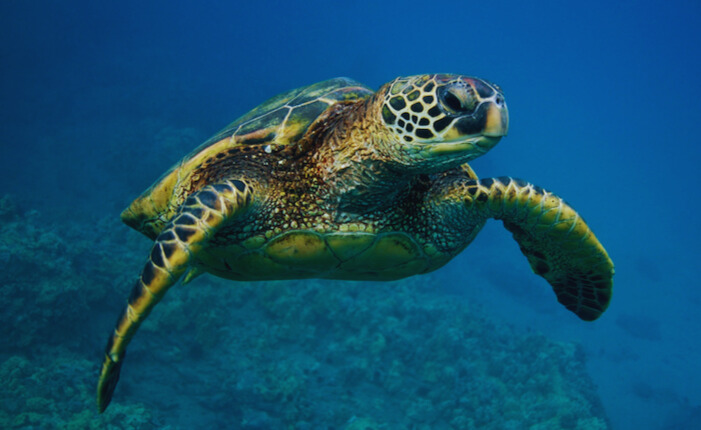
Green Sea Turtle is not just an emblem of marine beauty but also a critical component of oceanic ecosystems. Their survival is intertwined with the health of our oceans, and their protection is a responsibility that extends beyond national borders and generations.



